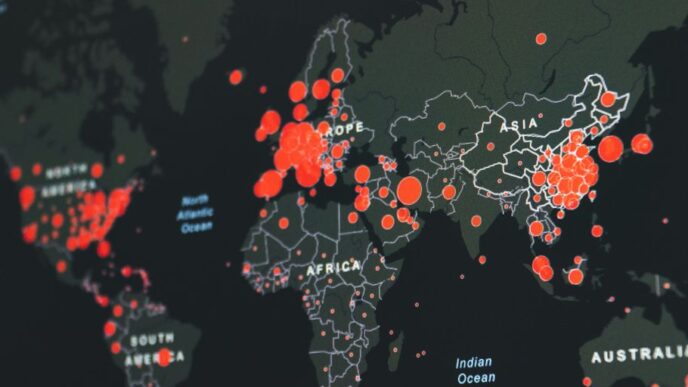Introduction: The Ever-Changing Landscape of Identity Safety
In our increasingly digital world, the concept of identity theft protection has evolved dramatically. Gone are the days when safeguarding personal information was as simple as shredding a bank statement or locking a filing cabinet. Today, the digital footprint of an individual spans across numerous platforms, devices, and networks, making identity protection a complex and dynamic challenge.
The history of identity theft protection is a tale of cat-and-mouse, where security measures and criminal tactics perpetually evolve in response to each other. Initially, concerns were focused on physical document theft and basic digital fraud. However, as our lives became more intertwined with the internet, the landscape of identity theft broadened significantly. This change necessitated a shift in how personal information is protected, leading to the emergence of comprehensive identity theft protection services.
These services, once rudimentary in their approach, now encompass a wide range of monitoring, alerting, and recovery features. From simple credit monitoring to advanced surveillance of the dark web, they reflect the multifaceted nature of modern identity theft. This transformation is not just a reaction to the growing sophistication of cyber threats but also a proactive step towards embracing future challenges.
The Technological Arms Race in Identity Protection
The battle against identity theft has always been a technological arms race. As cybercriminals develop more sophisticated methods to access personal information, identity protection services counter with advanced tools and strategies. The integration of artificial intelligence (AI) and machine learning into these services marks a significant leap forward. AI’s ability to analyze large data sets and recognize patterns allows for faster and more accurate detection of potential identity theft activities. This technological advancement means that threats can be identified almost as soon as they occur, significantly reducing the window of vulnerability.
Moreover, the use of biometric security measures, such as facial recognition and fingerprint scanning, has added a new layer of protection. These methods, once the domain of high-security facilities, are now becoming mainstream, integrated into everyday devices like smartphones and laptops. This shift not only enhances security but also adds convenience for users, who can now secure their digital profiles with a simple touch or glance.
However, as technology advances, so do the tactics of identity thieves. The rise of sophisticated phishing attacks, formjacking, and complex malware means that identity protection services must continually evolve. Keeping up with these developments is not just about implementing new technologies but also about understanding the ever-changing nature of cyber threats.
The Human Element in Identity Protection
While technology plays a crucial role, the human element remains integral to identity protection. The most advanced monitoring systems can detect potential threats, but human judgment and expertise are often needed to assess the risk accurately and take appropriate action. This is where the role of dedicated case managers and customer support teams becomes vital. These professionals not only provide guidance in the event of identity theft but also offer personalized advice on how to safeguard information.
Additionally, education and awareness are powerful tools in the fight against identity theft. Consumers equipped with knowledge about common scams and safe online practices are less likely to fall victim to fraud. Identity theft protection services have begun to focus more on this aspect, offering resources and training to help users recognize and avoid potential threats.
However, the human element also introduces vulnerabilities. Human error, such as the use of weak passwords or the accidental sharing of sensitive information, remains one of the largest security gaps. Addressing these issues requires a combination of technological solutions and ongoing education efforts.
The Future Landscape of Identity Theft Protection
Looking forward, the landscape of identity theft protection is set to be shaped by emerging technologies and evolving cyber threats. One significant development is the increasing interconnectedness of devices through the Internet of Things (IoT). While this offers convenience and efficiency, it also opens up new avenues for identity theft. Protecting identities in this hyper-connected world will require more sophisticated and integrated security systems.
Another area of focus is the growing concern over data privacy. As more personal information is shared online, the need for services that not only protect against identity theft but also safeguard privacy is becoming paramount. This shift may see identity protection services expanding their scope to include more comprehensive data privacy solutions.
Lastly, the rise of decentralized digital identities, such as blockchain-based systems, presents both challenges and opportunities. While these systems offer enhanced security and control over personal information, they also introduce new complexities in terms of management and recovery in the event of theft.
Conclusion: Adapting to an Ever-Evolving Challenge
The journey of identity theft protection reflects our broader adaptation to the digital age. It’s a story of continuous innovation, learning, and adjustment. As our digital lives become more complex, so too must our strategies for protecting our identities. This evolution is not just a technological one; it involves a holistic approach that includes technological advancements, human expertise, and cultural changes.











